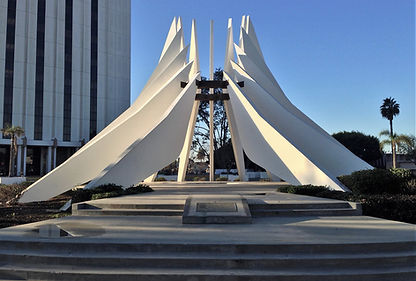🔥 Bureaucratic Gridlock While Altadenans Wait: A Critical Look at SoCal’s Rebuilding Paralysis
- Citizens Coalition Admin

- Jul 4
- 3 min read
Six months after the Eaton Fire reduced hundreds of homes in Altadena to ash, Southern California’s rebuilding process is paralyzed—not by a lack of will, but by a bureaucracy incapable of responding to crisis with urgency.
While the land has been cleared and residents are ready to rebuild, Los Angeles County’s permit machine moves at a glacial pace. Of the hundreds of homeowners who have submitted rebuilding applications, fewer than 50 have been approved. Many others are stuck in a swamp of contradictory code updates, redundant agency reviews, and an outdated permitting workflow that treats disaster victims like spec home developers.
This isn’t just red tape. It’s systemic failure. Families who were displaced in January are now cycling through RV parks, short-term rentals, or sleeping on couches while waiting months just to receive basic plan check feedback. Many have been forced to repeatedly revise architectural drawings for trivial technicalities, while others can't break ground due to inter-agency miscommunication over grading or fire setbacks.
Meanwhile, the much-publicized “One-Stop Rebuild Center” and Unified Permitting Task Force have provided optics, not outcomes. The intent is good—but without true interdepartmental integration and emergency-level authority to override standard delays, they remain little more than symbolic.
The truth? This is not a natural disaster issue—it’s a governance failure. Southern California has the resources, professionals, and manpower to rebuild Altadena faster than this. But what's missing is accountability.
When local government cannot distinguish between routine development and disaster recovery, it leaves survivors stranded. Inaction becomes policy, and survivors become forgotten.
Unless a radical acceleration of permitting and approvals is implemented—backed by political will and full-time dedicated rebuild teams—thousands of displaced residents will face a second wave of trauma: long-term homelessness caused not by fire, but by bureaucracy.

⚠️ Current Rebuilding Status (as of July 2025)
In short, this is the situation:
Six months post-Eaton Fire:
Thousands remain displaced.
Hundreds of homes cleared but fewer than 50 permits issued.
Permitting process mired in bureaucracy, delays, and conflicting requirements.
Organizations like Habitat for Humanity helping, but impact is minimal compared to need.
Local government’s slow response = ongoing homelessness caused by red tape, not fire.
A little deeper look at the situation:
1. Lot Clearance & Certification
Debris cleanup is largely complete, with 75 % of residential lots cleared and certified for rebuilding across Los Angeles, including Altadena. https://www.latimes.com/environment/story/2025-07-03/federal-contractors-improperly-dumped-asbestos-la-landfills
2. Permitting Progress
Rebuilding permits remain sluggish:
Approximately 890 rebuilding applications submitted; only 44 permits issued as of July 1, 2025.
Another report notes just 15 permits issued five months post-fire.
Earlier data from four months after the fire showed only 9 permits in Altadena.
At this pace (30 permits per month), the issuence of all the permits will require another 28 months to be processed. Many Eaton fire victims will need to wait for another 2.5-3 years to clear the permit process.
The average permit turnaround is around 10 weeks, with multiple review steps creating a huge bottleneck.
Many applicants are still stuck in multi-agency review loops, particularly for:
Structural engineering updates
Updated seismic/soil standards
L.A. County Fire Department defensible space compliance
3. Rebuilding Challenges
Common barriers for Altadena homeowners:
Insurance underpayment or delays
Permit backlog in county departments
Rebuilding code changes since original homes were built
Septic system issues in non-sewer areas
4. Government Assistance
A One-Stop Rebuild Center in Altadena has been created where property owners can:
Submit plans
Get zoning/code compliance feedback
Request permit fee waivers or reductions (some qualified based on income/hardship)
Supervisor Kathryn Barger and LA County formed a Unified Permitting Strike Team to prioritize fire rebuilds.
5. Accelerated Rebuild Options
Pre-approved home plans are available (via Foothill Rebuild Catalog), which:
Can significantly reduce architectural design time
Are pre-reviewed for Altadena’s zoning and fire regulations
Habitat for Humanity broke ground on several fire-impacted homes with expedited permits, setting a model for others.
⚠️ Summary of Roadblocks
Obstacle | Cause |
Low permit issuance | Multi-agency red tape; building code updates |
Delayed rebuilding | Insurance gaps, high construction costs |
Slower than expected progress | Bureaucratic process, not homeowner hesitancy |







Comments